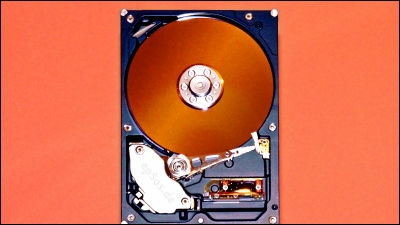A bug report that `` SSD becomes inoperable after 40,000 hours of use '' is a topic

In recent years, SSDs have become larger and cheaper, and many desktop and mobile machines are now using SSDs. At the beginning of the spread of SSD, it was pointed out that the short life due to the limit on the number of writes was pointed out, but due to the progress of technological development, it has reached the situation that ' If it is a general usage method, there is no need to worry about the life '. . Meanwhile, Hacker News, a news sharing service, has reported a bug that `` SSD becomes inoperable after 40,000 hours of operation due to a firmware bug ''.
SSD will fail at 40k power-on hours (2021) | Hacker News
https://news.ycombinator.com/item?id=32048148
When SSDs first appeared, there was a limit to the number of writes for structural reasons, and the use of SSDs was not recommended in environments where frequent writing to storage occurred. However, in 2015, an endurance test that continued to write data to the SSD for over a year confirmed that it could be used for 70,000 days (190 years) even if 10 GB of data was rewritten every day. There is no need to worry about the lifespan of SSDs as long as they are used in general.”
What is the truth about reliability found in the endurance test that writes data to SSD and drives it to irrecoverable? -GIGAZINE

As mentioned above, it seemed that the SSD lifespan problem was almost solved, but in 2020, Hewlett Packard Enterprise , which manufactures enterprise hardware, said, ``There is a bug in the firmware of the manufactured SSD, When the operating time reaches 40,000 hours, the SSD becomes unusable'. At the same time, Cisco, a major network equipment company, also reported a problem that `` SSDs that have been operated for 40,000 hours become unusable due to industry-wide firmware bugs ''.
Regarding the above problem, each manufacturer has released a correction patch to solve the problem. However, in July 2022, the above Cisco defect report was shared on Hacker News, and many users reported the uptime of their SSDs and were very excited.
Storage such as HDD and SDD adopts a self-diagnostic standard called 'SMART', and you can check the cumulative operating time and operating temperature using an application that can view SMART information. Hacker News has received many posts reporting the operating time of its own SSD, such as ``As a result of checking the SMART information, it was revealed that it was running for 74,233 hours.'' On the other hand, there is also a post saying, ``As a result of browsing SMART information, the time clearly different from the actual operating time was output.'' This shows that not all SSD manufacturers have accurately implemented the SMART standard.
In addition, when checking the operating time of SSD in Windows, it is recommended to use a long-established storage information display application such as ' CrystalDiskInfo '. Also, if you are using Linux or macOS, you can easily check SMART information by installing the command line tool ' smartmontools '.

Related Posts:
in Hardware, , Posted by log1o_hf







